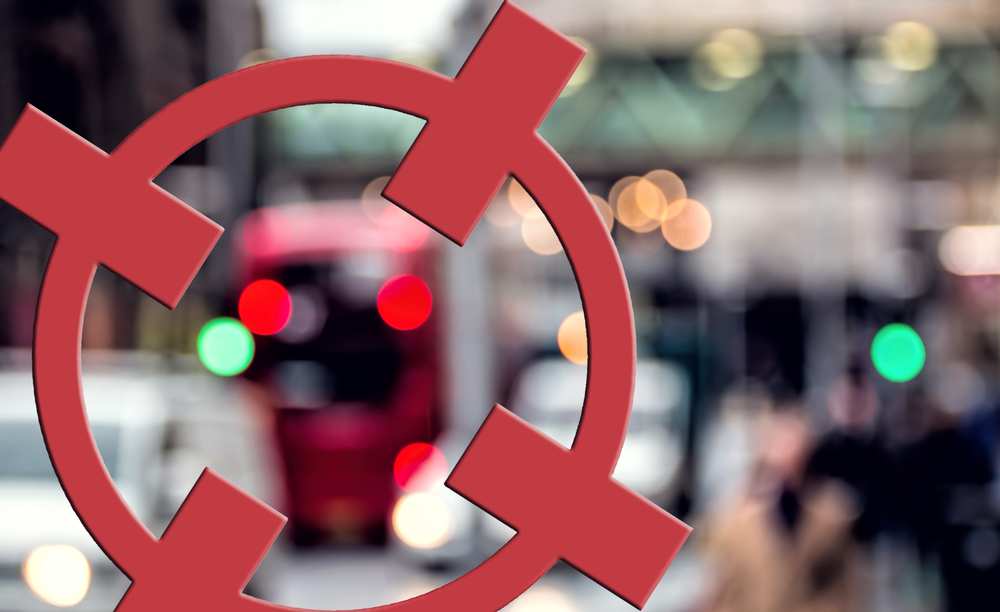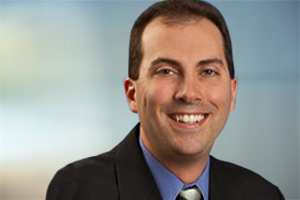The terrorist attacks in Paris on November 13 disrupted what was supposed to be a pleasant Friday evening in the City of Lights. A performance by an American band at the Bataclan Concert Hall, a soccer match between France and Germany, and even dining at a restaurant were disrupted by the barbaric attacks on innocent people.
It was the deadliest terrorist attack in Europe since the Madrid train bombings of 2004, in which 191 people perished. It also came less than two weeks after a Russian plane crashed in Sinai, Egypt, believed to be brought down by a terrorist bomb, killing all 224 people aboard. In light of the recent tragic events in France, RGA spoke with Weimeng Yeo, a key member of the Risk Management Solutions (RMS) team responsible for the development of the organization’s terrorism model. RMS, founded in 1988, offers catastrophe (natural and man-made) risk modeling solutions worldwide.
1) What is the threat posed by Western fighters who have joined jihadist groups in Syria and Iraq?
From a threat perspective, foreign jihadi involvement in both Iraq and Syria could impact the global terrorism risk landscape in multiple ways. First, the returning jihadis potentially could revitalize their cause in their homeland and act as a conduit reconnecting local groups to the global jihad. Second and more important, there is also a risk that some of these veterans may attempt a terrorist attack back in their homeland. While the majority of jihadist foreign fighters do not end up attacking their home countries, a small number do, and they often prove more capable and proficient than those without any fighting experience.
2) Beyond ISIS and al-Qaeda, what are other terrorist groups most likely to execute an attack in the West?
This is a really broad question in terms of geographical coverage as well as in terms of what sort of attacks will be perpetuated. Be that as it may, the vast majority of terrorist attacks in western countries have actually been perpetrated by separatist organizations (e.g., dissident groups in Northern Ireland, ETA in Spain), but many of these attacks range from singular armed attacks or assassinations to small pipe or petrol bombs.
In terms of larger attacks, the West will be at risk from affiliated groups linked to IS and perhaps al-Qaeda. The most active of the affiliates are Jabhat Nusra (JN), al-Qaeda in the Arabian Peninsula (AQAP), al-Qaeda in the Land of the Islamic Maghreb (AQIM), Boko Haram, and al Shabaab. These groups have contributed to a much higher tempo of terrorist activity, elevating the level of risk. As these groups vie for more recognition to get more recruits, they are likely to orchestrate larger-scale attacks as a way of raising their own terrorism profile.
3) What type of terrorist attack would most likely be perpetrated on Western soil? What is a probable target (e.g., commercial building, transportation, etc.)?
Given the stronger counterterrorism environment,the West will likely see armed attacks or assaults as opposed to attack modes, such as car bombs, which are more difficult to coordinate and execute. Please note that an armed attack can still lead to significant casualties. An example of such an attack is the unfortunate events that occurred in Paris.
The armed attacks in Paris in November 2015 involved a group opening fire on a gathering of people in order to kill as many as possible. Similar to the Mumbai attacks in 2008, the ability to roam around and sustain the attack, while being willing to kill themselves in the onslaught, makes such attacks more difficult to combat. From the terrorist's perspective, these assaults offer a number of advantages, such as greater target discrimination, flexibility during the operation, and the opportunity to cause large numbers of casualties and generate extensive worldwide media exposure.
It is possible that following the success of these attacks, such armed assaults as seen in Paris will become an even more attractive tactic for terrorist groups to replicate. These attacks will typically target people in crowded areas that lay outside any security perimeter checks such as those of an airport or at a stadium.
4) What stood out in the recent Paris terrorist attack?
Though tragic, the Paris attacks do not come as a complete surprise to the counterterrorism risk community. The terrorism threat in France is higher compared to several other Western European countries. Apart from this recent attack, there have already more than five attacks in the last 18 months.
What is surprising are the magnitude and scale of these attacks. These attacks were very ambitious. Divided into three distinct groups, the militants were able to execute simultaneous strikes on six locations. Simultaneous attacks are very effective as they cause a significant number of casualties before the security services have the time and ability to respond. The attacks were also very well coordinated and involved myriad attack devices, reflecting sophistication that can only come from having some level of military training and expertise as well as centralized control.
5) Can such an event happen in the U.S?
Unfortunately, the answer is yes. Since the 9/11 attacks, authorities have uncovered a number of terrorist plots to carry out armed attacks at various targets. Targets include military training and recruiting centers, shopping malls and synagogues. One notable example is the Fort Hood incident in November 2009, where Major Nidal Hassan shot and killed 13 people and injured more than 30 others at an Army medical facility.
6) Outside of New York City, which U.S. cities would have the highest risk of an attack?
Macro-terrorism risk is an urban risk. More than 70% of macro-terrorism attacks were perpetrated at the capital or a major city (major city is defined as one of the largest five cities by population in the country where the terrorist attack took place). Larger terrorism attacks tend to focus on key cities of a country. While the majority of plots in the U.S. were in NYC or Washington, D.C., there have been also a number of terrorism plots in other major cities such as Chicago and Los Angeles. The attacks by the Tsarnaev brothers in the Boston Marathon bombing in 2013 reflect this trend.
7) What are the drivers of violent extremism?
Key drivers include:
- Denial of basic political rights and civil liberties
- Harsh and brutal rule that entails gross violations of human rights
- Widespread corruption and perceived impunity for well-connected elites
- Poorly governed and ungoverned areas
- Long-term violent conflicts
- Repressive regimes
8) How many terrorist attacks planned for U.S. soil have been disrupted by the FBI and/or some other agency since 9/11? Of these, please give brief examples of the most significant attacks planned.
According to a report done by Peter Bergen, Vice President of New America, a non-partisan think tank, since September 11, 2001, nearly twice as many people have been killed by white supremacists, antigovernment fanatics and other non-Muslim extremists than by radical Islamic militants.
However, when we look at macro or large-scale attacks such as car bomb attacks, the threat landscape is somewhat different. According to open sources, since 2001, there are around 38 known macro or large scale terrorism plots perpetrated in the U.S. The majority of these plots fall within the jihadi range, with one or two plots that fall under the non-religious category.
The Times Square car bombing attempt that occurred on May 1, 2010, was foiled when two street vendors and another person spotted smoke coming from a vehicle and alerted New York City security personnel to the threat. Had it not been for the attentive street vendors, the attack might have been successful.
9) What would be the most conceivable black swan-type event?
This is a tricky question given the fact that black swan-type events are by nature unexpected events. That said, chemical, biological, radiological and nuclear (CBRN) events are the most plausible of the black swan-type event. Terrorist groups such as the Islamic State (IS) continue to show a keen desire to acquire and develop such weapons. There is enough credible information to show that the Islamic State has at least a nascent CBRN program. Fortunately, obtaining a CBRN weapon capable of killing hundreds, much less thousands, is still a significant technical and logistical challenge.Al-Qaeda in the past has tried unsuccessfully to acquire such weapons, while counterterrorism forces globally have devoted significant resources to preventing terrorist groups from making any breakthrough. Current evidence suggests that the Salafi jihadists are still far from such capabilities, and at best can only produce crude CBRN agents that are more suited for smaller attacks. However, the Islamic State (IS), with its sizeable financial resources, its success in recruiting skilled individuals, and the availability of CBRN materials in Iraq and Syria, has increased the probability, albeit slightly, that it can carry out a large CBRN attack. As such, it seems that it is a matter not of “if” but rather of “when” a mass CBRN attack can occur.
10) What are the main types of counterterrorism efforts, and how effective have they been thus far?
There are several approaches to counter the terrorism threat. They include tactical, operational and strategic approaches to reduce the “space” in which terrorist groups can function. Like most security problems, a multi-prong approach is required to curb political violence. While the tactical and operational efforts have been generally effective in deterring the threat in the U.S., the strategic component is often hindered due to political expediency or lack of political will.
11) How is the current terrorism environment reflected in RMS’ terrorism models?
Terrorism is a dynamic peril. It is constantly changing as trends to make us safer vie with the ingenuity and adaptation of the terrorists to mount damaging attacks. This is why each year, Risk Management Solutions (RMS) carries out a formal review and parameterization of its probabilistic model to reflect the current terrorism environment.
12) How has social media contributed to the terrorism threat?
Terrorists increasingly are using social media as a means of communication both with each other and the rest of the world. The strategy of bringing like-minded people together via social media to increase radicalism and improve technical capabilities among individuals significantly changes the terrorism threat picture and adds additional complexity in defending against attacks.



